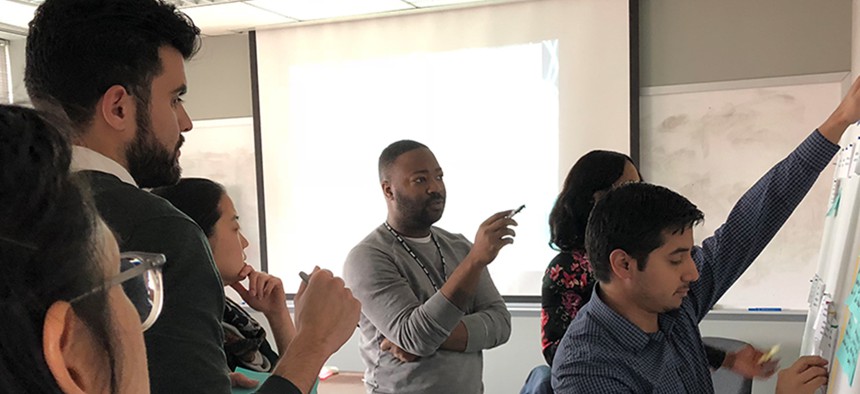Approach to preventive services gets ACS some recognition
The goal of ACS’ Division of Prevention Services, is to help families keep their children safely at home.

People in an office ACS
New York City’s Administration for Children’s Services (ACS) is perhaps best known for supporting children after a traumatic incident has taken place. While that’s certainly one aspect of the agency’s work, a lot of what ACS does involves implementing programs to prevent a traumatic incident from occurring in the first place. In fact, 20,000 New York City families take part in the many prevention services we provide through the ACS Division of Prevention Services.
The goal of ACS’ Division of Prevention Services, is to help families keep their children safely at home. Working in partnership with 54 nonprofit agencies, we provide an array of services and over 200 programs in communities across the five boroughs addressing needs as diverse as mental health, substance abuse, domestic violence, and housing instability, and offering programs so that families have resources in their communities to help them thrive. However, when it comes to the safety, well-being, and social-emotional needs of the children and families we serve, there’s always more to be done.
ACS has been selected the winner of the first-ever citywide “Designing for Opportunity” competition launched by the Service Design Studio at the Mayor’s Office for Economic Opportunity. As a result, ACS has the unique opportunity to work with the studio’s designers on a yearlong innovative project engaging community leaders, nonprofit providers, and families to shape the prevention services offered by the agency.
The Pathways to Prevention project is a partnership between the studio and the Community Based Strategies team. CBS is a new branch of ACS’ Division of Prevention Services focused on empowering children, families and communities through community-driven design, program implementation and monitoring. Pathways to Prevention enables us to conduct deep research with families to develop a customer-service, family-centered approach to offering prevention services. In other words, we want our prevention services to be built with families, not just for families.
Prevention services can help strengthen families and reduce the likelihood of children entering foster care. Evidence-based models have made it clear that including parents and children in the social work decision-making process leads to more successful outcomes for families. Simply put, when families choose to participate in programs, rather than being forced, long term outcomes are much more likely to be successful. Since 2011, we have seen a 40 percent increase in the number of families engaging in our programs.
CBS is committed to making sure our work is guided by the voices of families and communities – and that it advances social justice and demonstrates measurable impact. In addition to speaking with families, the Pathways to Prevention project team will conduct interviews and focus groups with community organizations, service providers, and many divisions at ACS. It’s important for us to understand what’s happening at every level of the service – from the administration to the day-to-day work with children and families. This will help us understand and connect many different points of view within the prevention service experience so we can make it as valuable as possible for families.
While Pathways to Prevention presents ACS with a unique opportunity to revamp our programs in a way that’s never been done before, the approach perfectly fits our mission to ensure the safety and well-being of all New York City children.